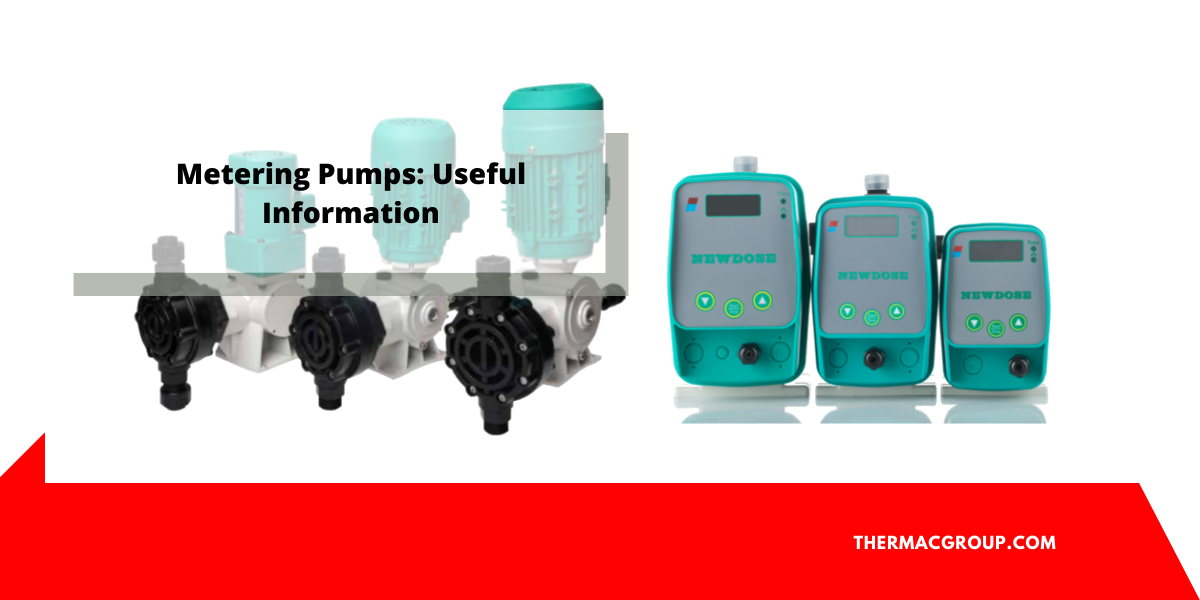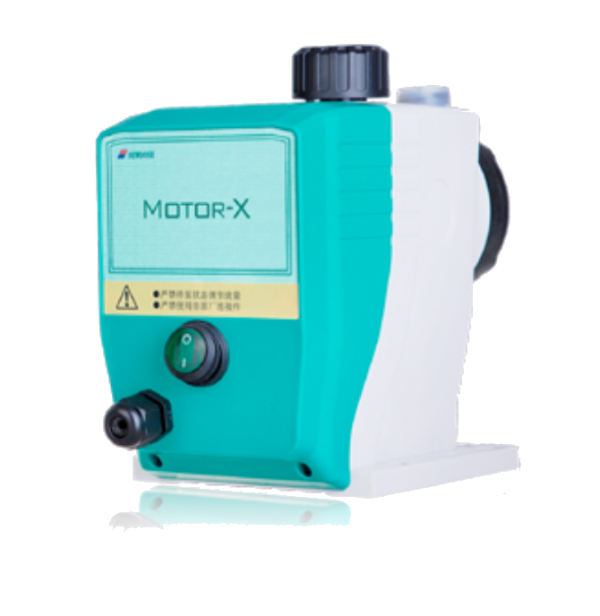What exactly is a metering pump?
A metering pump is a device that adds little but precise amounts of liquid to other fluid streams or containers. Metering pumps are also known as dosing and proportioning pumps. A metering pump must be capable of delivering liquid with higher than 3% accuracy across a wide range of discharge pressures.
Metering pumps are used in what applications?
Metering applications that are commonly used include:
- Maintaining a consistent flow rate in the face of changes in differential pressure or fluid viscosity.
- Providing a variable flow in order to maintain a system parameter (for example, pH).
- Injecting a single dosage (typically required in batch processing).
Many sectors, including medicines, water and waste treatment, food and beverage production, electricity generation, chemical processing, petrochemicals, and oil and gas extraction, require metering. Liquids can range from scents and pigments used in the manufacture of hygiene and food to acids and alkaline solutions used in chemical operations and water treatment.
Which pumps are used for metering?
A centrifugal pump can be used to create a regulated flow when delivering low viscosity liquids at high flow rates (>1 m3/h) and low delivery pressures. This is likely to be the most cost-effective option. In some cases, however, proper metering involves the use of a positive displacement pump. This type of pump transports a fluid by repeatedly enclosing a defined volume and mechanically pushing it through the system with the use of seals or valves. The pumping motion is cyclic, and a specified delivery rate or correct single dose may be achieved by regulating the motor’s speed or stroke length.
For metering and dosing, reciprocating pumps with plungers, pistons, or diaphragms have traditionally been employed. These pumps are designed to maintain a constant flow rate throughout a large and variable pressure range. However, with recent advancements in electronics and control technology, different designs, such as peristaltic pumps or gear pumps, can be employed.
What are the benefits and drawbacks of piston and plunger pumps?
A piston pump draws a predetermined volume of liquid into the pump on the suction stroke and delivers it on the compression stroke. The amount of fluid transported by the pump with a plunger design is determined by the plunger size. The volume of liquid given is precisely known in both circumstances. The reciprocating motion, on the other hand, indicates that no fluid is given during the suction stroke of the pumping cycle. The fluid accelerates during the delivery phase and slows during the suction phase, causing pulses in the discharge. Because pulsation can generate detrimental vibrations in the discharge system, damping or smoothing is frequently used. Pulsing can also be reduced by utilizing extra, out-of-phase pistons or plungers. The effectiveness of the seal surrounding the piston or plunger is critical for sustaining pumping action and avoiding leaks.
What are the benefits and drawbacks of diaphragm pumps?
To move fluid, a diaphragm pump employs a flexible membrane rather than a piston or plunger. The capacity of the pumping chamber is expanded by extending the diaphragm, and fluid is sucked into the pump. When the diaphragm is compressed, it reduces volume and expels some fluid.
Diaphragm pumps benefit from being hermetically sealed, making them excellent for pumping hazardous fluids. The precision of delivery, on the other hand, is reliant on the functioning of the discharge and suction side valves, as well as the amount of any backflow. Pulsation in the discharge is also a problem with diaphragm pumps, although it may be mitigated by using two (or more) diaphragms, one in compression and the other in suction. The air-operated double diaphragm pump is an example of this method (AODD). With flows less than 10 m3/hr and an acceptable accuracy of 3 percent, AODDs are a reasonably low-cost and dependable metering device capable of functioning at up to 10 bar. They may be operated dry and handle unclean or polluted liquids. AODDs are often employed as metering pumps in the water sector for injecting chemicals and as coloring and cleaning agents in the food business.
What are the benefits and drawbacks of peristaltic pumps?
A peristaltic pump works by mechanically compressing a space contained by a flexible part to supply fluid. A popular form employs rollers that act directly on a pipe holding the liquid. Peristaltic pumps are widely employed as measuring pumps in laboratories and hospitals, but developments in materials technology have resulted in heavy duty pumps capable of dealing with very viscous fluids, sludges, and slurries in a variety of industrial applications.
The pumped fluid is constantly confined and never comes into touch with the pump mechanism, which is a benefit of peristaltic pumps. This makes it perfect for applications where cleanliness is critical, such as medical applications and food processing. Solids can also be handled by peristaltic pumps. The wear of the flexible parts might be a concern, and they should be replaced on a regular basis to avoid failure. The cyclic pumping motion causes pulses in the discharge, which can be decreased by adding more hoses and pumping parts.
Peristaltic pumps are typically limited to discharge pressures of up to 10 bar and flow rates ranging from 0.001 l/hour to 50m3/hour. They are often used in research facilities, chemical operations, and the injection of thick slurry additives (for example, lime dosing in the water industry).
What are the benefits and drawbacks of gear pumps?
Gear pumps move fluids by utilizing the operations of spinning cogs or gears (Figure 4). The revolving element provides suction at the pump intake by forming a liquid seal with the pump casing. Fluid is pulled into the pump and contained inside the teeth of its spinning cogs or gears before being discharged.
Gear pumps provide several benefits over piston-driven systems. They can tolerate high operating pressures and are suitable for high viscosity fluid applications. They are simple and inexpensive, with accuracies of 0.5 percent possible. Gear pumps offer smaller pulsations than diaphragm pumps and distribute fluid without the surging pulses seen with piston-based pumps. This simplifies system design (no pulsation dampeners are required), improves flow measurement accuracy, and results in lower NPSH needs. Fluid leakage issues can be avoided by equipping gear pumps with a hermetically sealed magnetic connection.
Gear pumps rely on fine tolerances between gears, bearings, and casing, which can be compromised by abrasive feed. Wear and, as a result, leaks can occur along the gear teeth, across the face of the gears, and around the bearings. Wear causes a progressive decrease in efficiency and a rise in flow slip, which is the loss of pumped fluid from the discharge side back to the suction side. Because flow slip is related to the cube of clearances within a pump, it can have a substantial impact on pump output. Metering accuracy suffers as a result of this.
Gear pumps are commonly used in delicate chemical, medical, and pharmaceutical applications to transport chemically reactive compounds as well as to meter additives at high pressure in the plastics, rubber, and polyurethane industries.
For more information about metering pump malaysia, please visit https://thermacgroup.com









